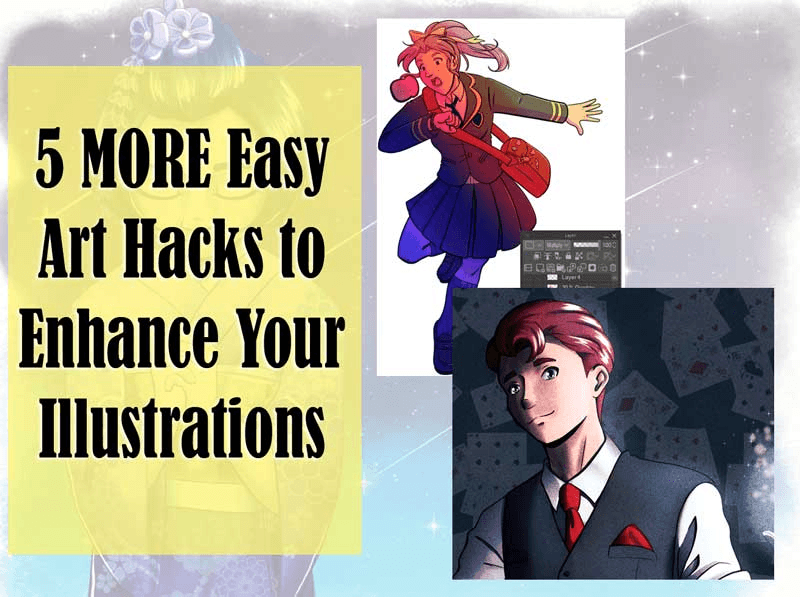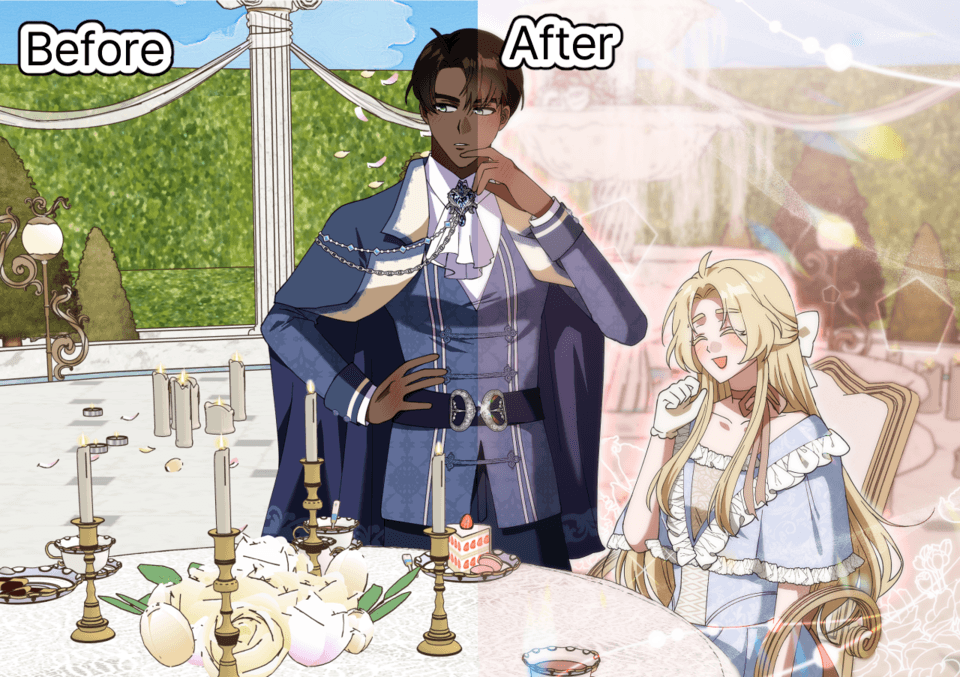Comic storyboard notes
Preface
When it comes to storyboarding, my own opinion is that in addition to learning from works with excellent storyboarding, you can also try to look at works drawn by beginners.
Because the storyboards of excellent works may be very personal, or they may not be special, but they all have one thing in common - they allow readers to read them smoothly.
On the other hand, for works that are not that good, it doesn’t matter whether the content of the story interests you. You may feel hindered while reading, forcing you to not be able to enjoy the entire chapter.
So from this point of view, instead of letting me tell you what to do, let me remind you what not to do and let you refer to whether to comply with it. You will have more freedom in storyboarding.
The explanation is based on comic strips as an example, but some principles apply to traditional comics as well.
*How to use Clip to start a manuscript, you can refer to this tutorial I wrote before⬇️
Storyboard points
The aspect ratio of the sample images is mostly 20:9 for mobile phone screens.
It is recommended to watch this TIPS article with a mobile phone, which will make you feel more deeply.
1. Don’t enlarge unimportant images too big
There is not much information, it is just to convey the scene. The bigger the picture in that frame is, the more readers will move their fingers. If you don't see the key points in the long run, it's easy to get bored.
There is no need to fill up the "important" and "unimportant" grids.
It can be modified like this.
⬇️
2. Don’t put important things (information) aside, but put them in a conspicuous place
My example is actually not the worst situation. At least there is a pre-reminder saying "I want to give something away."
If you suddenly take out something important and put it in the grid next to it,
It is easy to be ignored by readers.
⬆️It’s so bland that I don’t know why it is divided into two grids.
You could just use one scene, but still have two lines.
⬆️The "gift" feels a little more valued, and it will not be awkward if it is divided into two compartments.
⬇️Continue to strengthen the atmosphere and it will become like this.
3. When two people start talking, it is best to have at least one scene in the same frame and let the reader understand what kind of space they are in.
Who => where => did something. Human memory should be in order.
If the reader is not told where the characters are, the reading experience will easily become confusing.
If the characters are not in the same frame first, it will look like they are talking to each other from a distance, and the relationship will become alienated; or they will not know who is speaking to whom.
The opening incident was kicking a stone and falling down.
Next…
⬆️This is what I said, the two of them are not in the same frame.
Although it can make people understand what is being expressed, if this kind of storyboarding is repeated several times, it will easily distract the readers.
⬆️Are the characters in the same frame? Do you feel the difference?
Then, we can also...
⬆️With a clear background, does the picture look much more comfortable?
I know that for some people, dealing with background is a hassle, but it's important to let the reader know where your characters are on a regular basis.
4. The picture should follow the character’s line of sight appropriately.
This should be easy to see.
The character's perspective cannot be viewed from left to right one second, but immediately changes from right to left in the next frame.
The transition would be too abrupt.
⬆️Although it is a failure case, it is actually not uncommon.
⬇️Correction
The occurrence of this problem has nothing to do with whether the character is standing on the left or the right.
The main reason is that the eyes turn unnaturally.
⬇️As shown in the picture below, the character has been moved to the right, but there is no problem.
5. Don’t crowd out dialog boxes
This can be said together with the spacing between grids.
In the early days of Webtoon, many commercial cartoons were full-page, with no obvious gaps between the grids, but readers at that time could still read the works smoothly.
The key point still depends on the placement of the dialog box.
⬇️This time, let’s take the correct example first so that we can compare the differences.
⬇️The following is a less excellent example
The difference between these two versions lies in "whether you dare to press the dialog box on the character."
Some people may think that since I worked so hard on the characters and decorations, they cannot be blocked by the dialog box, so I placed the dialog box at the edge.
But in fact, this will make it more difficult for readers to read the work.
Because the reader's line of sight needs to scan left and right, the distance becomes longer.
If the reader is forced to read from the far left to the far right, and from the far right to the far left,
The viewing experience will become uncomfortable, and the desire to finish reading the work will be reduced.
⬆️Also, there is the problem of placing the dialog box too far away from the edge.
--The content of the dialog box is not easily related to the picture.
The focus of the grid below is to allow readers to associate the character’s appearance with the text in the dialog box.
If the two are too far apart, it will be more difficult for readers to associate the two together.
Returning to the previously mentioned issue of why there is no obvious interval between the grids, why it is inconvenient to see.
I will demonstrate a mistake and you will understand.
⬆️Follow the blue arrow and you will know that the biggest problem is not that the storyboards are too close together.
The problem is that dialog boxes tend to be placed on the far left and right, forcing your eyes to sway left and right. Furthermore, the screen stays in place for too long and cannot slide down smoothly.
6. Tell stories through pictures
There is no example for this, I can only give you some text tips.
The essence of comics, the basis for good-looking comics is to have good-looking pictures (pictures).
What's more, just because the pictures presented in comics are easier to understand than words, some readers prefer reading comics to novels.
Although in a comic work, it is indispensable to rely on text narration to let readers understand the content of the story. But remember not to ignore the image part just because the text has been used to convey the message to the reader.
Just like wit-fighting comics and mystery comics, many explanatory lines will be accompanied by illustrations. Pictures are pictures that allow readers to better understand the plot and connections, rather than just any picture with little information.
That's the nature of comics.
I once heard someone say that with good comics, even if you remove all the lines and just look at the pictures, you can still understand roughly what the content is about.
Although it is a bit exaggerated, I think it is a very good word of encouragement.
Writers are always reminded not to rely too much on words and neglect the details that should be included in the picture, such as spatial presentation, character emotional performance, etc.
postscript
If I have any other advice, I can only say don't run away, don't look away.
After you finish your comic work, be sure to pick up your phone and check whether the reading flow of your work is smooth.
If you don't even feel comfortable with it, how can you ask readers to understand you?
My storyboarding skills are not great, so I can only share some basics that can make comics look smoother. I hope it will be helpful to you.
Thanks.
























Comment